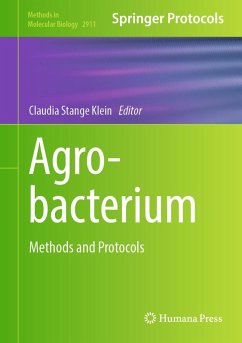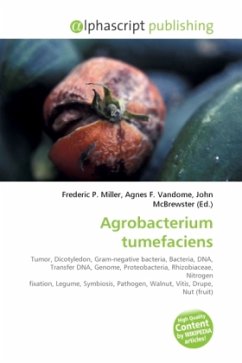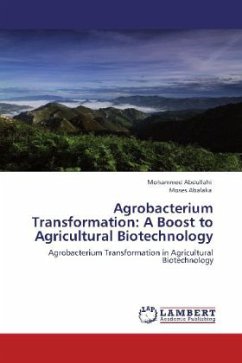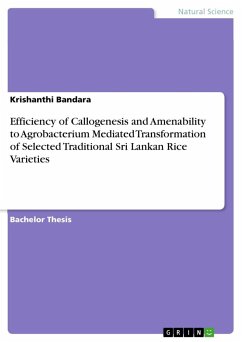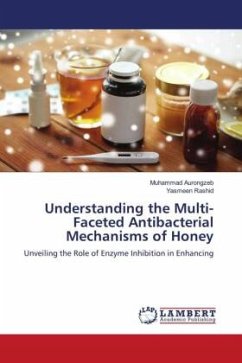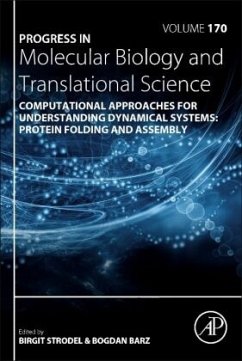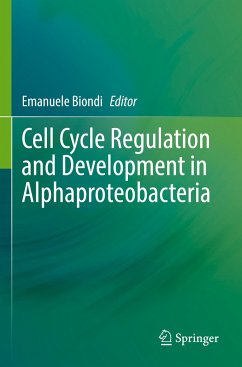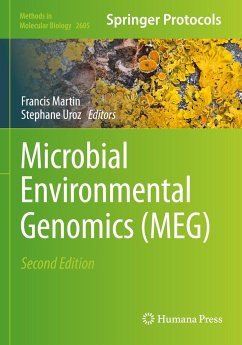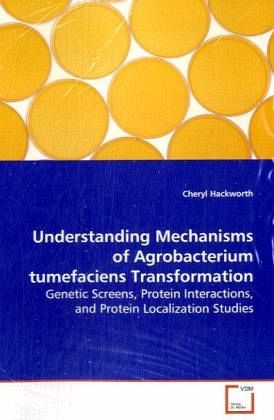
Understanding Mechanisms of Agrobacterium tumefaciens Transformation
Genetic Screens, Protein Interactions, and Protein Localization Studies
Versandkostenfrei!
Versandfertig in 6-10 Tagen
39,99 €
inkl. MwSt.

PAYBACK Punkte
20 °P sammeln!
Agrobacterium tumefaciens causes crown gall diseaseon plants and is the primary vector in geneticengineering of plants. Agrobacterium transports DNAand proteins to the plant cell via a Type IVSecretion System. This system is similar to secretionsystems in human pathogens and those used for DNAexchange during bacterial conjugation. To betterunderstand this process, a genetic screen using yeastas the genetically engineered host was developed toidentify host proteins involved in transformation.While developing this screen, factors that altertransformation of yeast were identified. The yeasttwo-hy...
Agrobacterium tumefaciens causes crown gall disease
on plants and is the primary vector in genetic
engineering of plants. Agrobacterium transports DNA
and proteins to the plant cell via a Type IV
Secretion System. This system is similar to secretion
systems in human pathogens and those used for DNA
exchange during bacterial conjugation. To better
understand this process, a genetic screen using yeast
as the genetically engineered host was developed to
identify host proteins involved in transformation.
While developing this screen, factors that alter
transformation of yeast were identified. The yeast
two-hybrid (Y2H) assay was used to identify protein
interactions between the exported proteins and the
secretion system. Additional studies indicate the
secreted proteins are targeted to the secretion
system via a conserved transport sequence. The Y2H
system was also used to assay for interactions
between proteins of the secretion system. Together,
these studies provide insights into transporter
complex protein subassemblies, the process of protein
export during Agrobacterium transformation, and
contribute to understanding homologous systems in
human pathogens and bacterial conjugation.
on plants and is the primary vector in genetic
engineering of plants. Agrobacterium transports DNA
and proteins to the plant cell via a Type IV
Secretion System. This system is similar to secretion
systems in human pathogens and those used for DNA
exchange during bacterial conjugation. To better
understand this process, a genetic screen using yeast
as the genetically engineered host was developed to
identify host proteins involved in transformation.
While developing this screen, factors that alter
transformation of yeast were identified. The yeast
two-hybrid (Y2H) assay was used to identify protein
interactions between the exported proteins and the
secretion system. Additional studies indicate the
secreted proteins are targeted to the secretion
system via a conserved transport sequence. The Y2H
system was also used to assay for interactions
between proteins of the secretion system. Together,
these studies provide insights into transporter
complex protein subassemblies, the process of protein
export during Agrobacterium transformation, and
contribute to understanding homologous systems in
human pathogens and bacterial conjugation.



